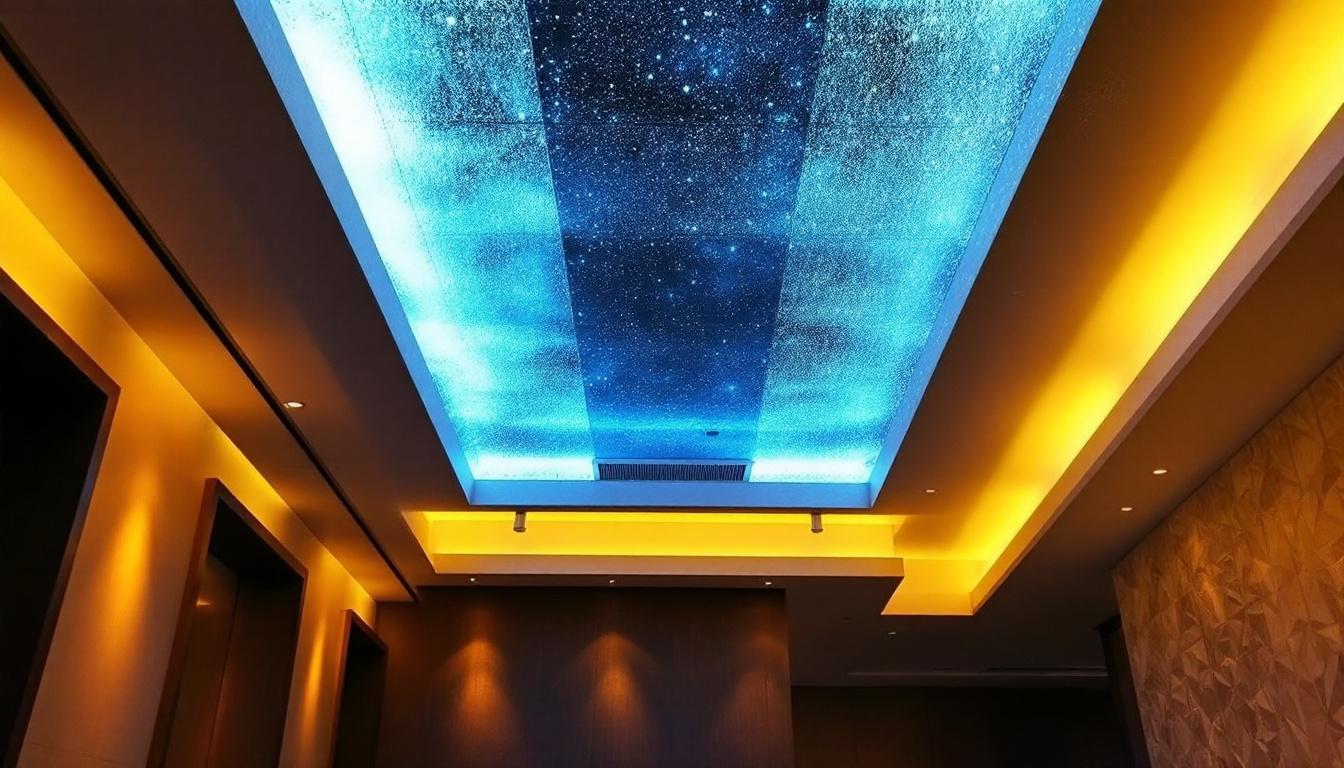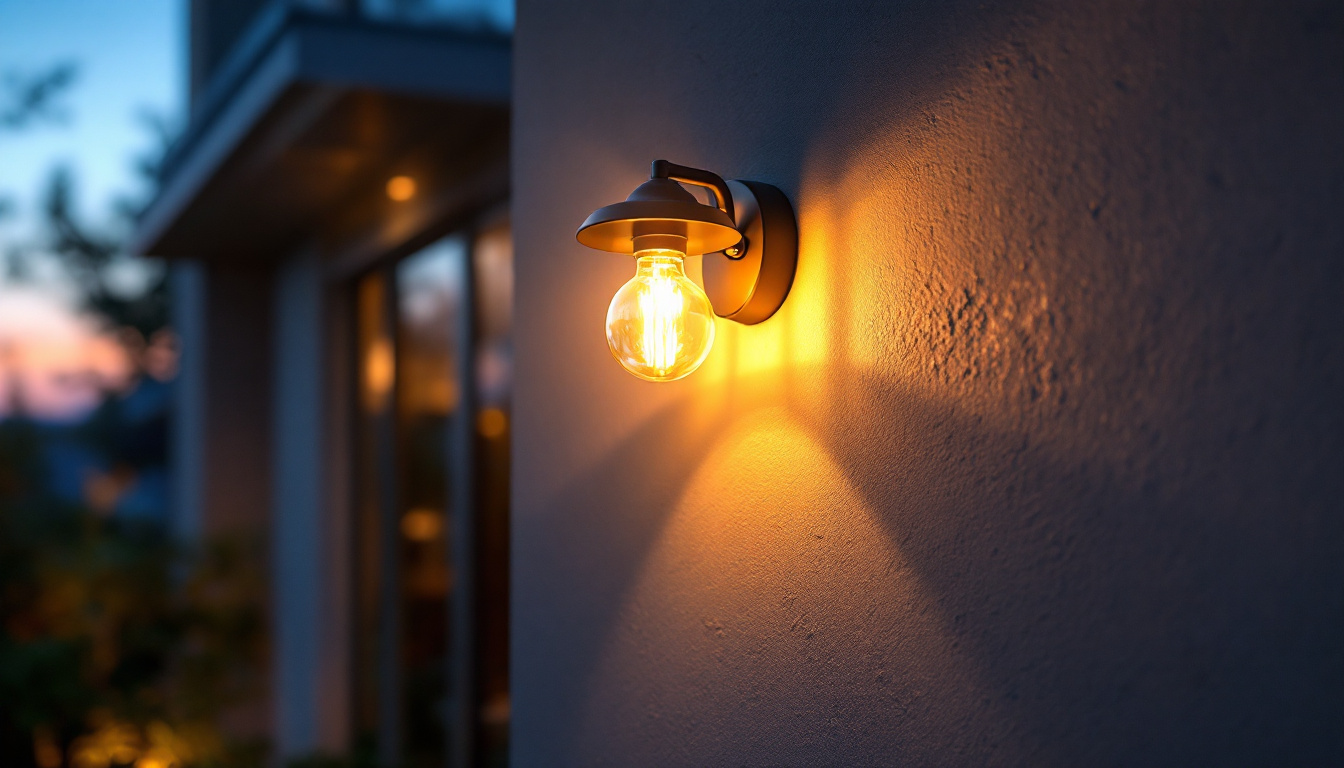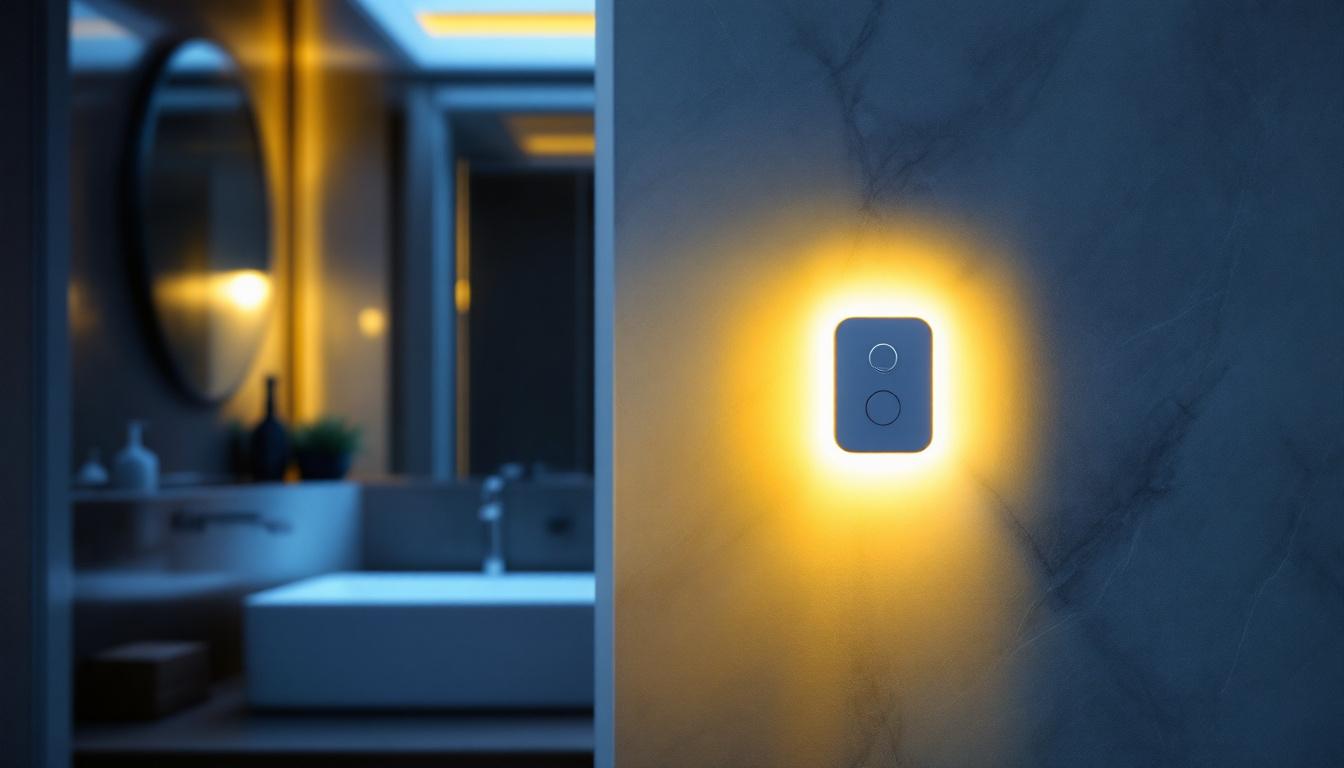
In the realm of lighting design, the ceiling often serves as an overlooked canvas. However, with the right approach, ceiling designs can significantly enhance the functionality and aesthetic appeal of a space. This article delves into the concept of ceiling dans, exploring how they can be leveraged to create better lighting solutions for various environments.
Ceiling dans, or ceiling designs that incorporate various architectural elements, play a crucial role in the overall lighting strategy of a space. They not only influence how light is distributed but also affect the ambiance and mood of the environment. By understanding the fundamentals of ceiling dans, lighting contractors can elevate their projects to new heights.
Ceiling dans refer to the various design elements and architectural features integrated into ceilings. These can include coffered ceilings, tray ceilings, and even decorative beams. Each design serves a dual purpose: enhancing the visual appeal of a room while providing opportunities for improved lighting solutions.
For instance, a coffered ceiling can create depth and dimension, allowing for strategic placement of recessed lighting. Similarly, tray ceilings can be illuminated with LED strips, casting a soft glow that enhances the overall atmosphere. Understanding these design elements is essential for lighting contractors aiming to maximize the effectiveness of their lighting solutions.
Ceiling height is a crucial factor that influences the effectiveness of lighting solutions. High ceilings can create a sense of grandeur but may require more powerful lighting to achieve the desired effect. Conversely, low ceilings can make a space feel cozy but may limit the types of fixtures that can be used.
When designing a lighting plan, it’s essential to consider how the ceiling height interacts with the chosen fixtures. For instance, pendant lights may work beautifully in a room with high ceilings, while flush mounts might be more appropriate for lower ceilings. Understanding these dynamics allows lighting contractors to tailor their solutions to the specific needs of each space.
Incorporating ceiling dans into lighting strategies can lead to innovative solutions that enhance both functionality and aesthetics. By leveraging these architectural features, lighting contractors can create spaces that are not only well-lit but also visually stunning.
One of the most effective ways to utilize ceiling dans is by creating layers of light. This involves combining ambient, task, and accent lighting to achieve a balanced and dynamic lighting scheme. For example, recessed lighting can provide general illumination, while pendant lights over a kitchen island can serve as task lighting.
Accent lighting can be achieved through the use of cove lighting along tray ceilings or highlighting architectural features like beams or moldings. By strategically placing different types of lighting at varying heights, contractors can create a rich, layered effect that enhances the overall design of the space.
Another critical aspect of leveraging ceiling dans is the integration of natural light. Architectural features such as skylights or large windows can be complemented by ceiling designs that direct and diffuse natural light throughout the space. This not only reduces the reliance on artificial lighting but also creates a more inviting and comfortable environment.
For instance, a well-placed skylight can illuminate a room with natural light, while a coffered ceiling can help distribute that light more evenly. By considering how natural light interacts with ceiling designs, contractors can create spaces that feel open and airy, even in smaller areas.
As the demand for unique and functional lighting solutions continues to grow, innovative technologies and design strategies are emerging. Lighting contractors can harness these advancements to create exceptional ceiling dans that enhance the overall lighting experience.
Smart lighting technology has revolutionized the way spaces are illuminated. By integrating smart lighting solutions into ceiling designs, contractors can offer clients customizable and energy-efficient options. For example, smart LED fixtures can be programmed to change color temperature or brightness based on the time of day or the activities taking place in the room.
Incorporating smart controls into ceiling designs allows for greater flexibility and adaptability. Clients can adjust the lighting to suit their needs, whether it’s brightening a workspace during the day or creating a cozy ambiance for evening gatherings. This level of control enhances the overall user experience and adds significant value to the project.
In today’s environmentally conscious world, energy efficiency is a top priority for many clients. When designing lighting solutions that incorporate ceiling dans, it’s essential to consider energy-efficient options that reduce consumption without sacrificing quality.
LED lighting is a prime example of an energy-efficient solution that can be seamlessly integrated into ceiling designs. Not only do LEDs consume less energy, but they also have a longer lifespan compared to traditional lighting options. By promoting energy-efficient solutions, lighting contractors can meet client demands while contributing to sustainability efforts.
To illustrate the potential of ceiling dans in enhancing lighting solutions, examining successful case studies can provide valuable insights. These examples showcase how innovative designs and strategic lighting choices can transform spaces.
In a recent residential project, a modern home featured a stunning coffered ceiling in the living room. The design incorporated recessed LED lighting within the coffers, creating a warm and inviting atmosphere. Additionally, pendant lights were hung over the coffee table, providing task lighting for reading and socializing.
The combination of ambient and task lighting not only highlighted the architectural features of the ceiling but also created a layered lighting effect that enhanced the overall aesthetic of the space. The homeowners appreciated the flexibility of the lighting, allowing them to adjust the ambiance based on their activities.
A commercial office space recently underwent a renovation that included the installation of a tray ceiling in the main conference room. This design featured integrated cove lighting that illuminated the perimeter of the room, creating a soft glow that enhanced focus during meetings.
Furthermore, adjustable pendant lights were installed above the conference table, allowing for direct task lighting when needed. The result was a dynamic workspace that fostered collaboration and creativity while maintaining a professional atmosphere.
While the integration of ceiling dans into lighting solutions offers numerous benefits, it also presents challenges that lighting contractors must navigate. Understanding these challenges and developing effective solutions is essential for successful project execution.
One of the primary challenges in ceiling design is striking a balance between aesthetics and functionality. While visually appealing designs are essential, they must also support effective lighting solutions. Contractors must carefully consider how each design element impacts the overall lighting strategy.
To address this challenge, it’s crucial to involve all stakeholders in the design process. Collaborating with architects, interior designers, and clients can ensure that the final design meets both aesthetic and functional requirements. By fostering open communication, contractors can create designs that are both beautiful and practical.
Every space presents unique challenges, from varying ceiling heights to different architectural styles. Adapting ceiling designs to suit these diverse environments is essential for achieving successful lighting solutions. For example, a historic building may require more traditional ceiling designs, while a contemporary space may benefit from sleek, modern features.
Contractors should conduct thorough assessments of each space before finalizing designs. This includes considering factors such as existing architectural elements, intended use of the space, and client preferences. By tailoring designs to the specific context, contractors can ensure that lighting solutions are both effective and harmonious with the surroundings.
As technology and design continue to evolve, new trends are emerging in the realm of ceiling dans and lighting solutions. Staying informed about these trends can help lighting contractors remain competitive and offer cutting-edge solutions to their clients.
Biophilic design, which emphasizes the connection between nature and the built environment, is gaining traction in lighting and ceiling design. Incorporating natural elements, such as organic shapes and materials, can create a calming and restorative atmosphere.
Incorporating biophilic principles into ceiling designs can enhance the overall lighting experience. For instance, using natural wood finishes or incorporating plant life into ceiling features can create a sense of tranquility while improving the quality of light in a space.
The demand for flexible and adaptive lighting solutions is on the rise. As work environments evolve, so do the needs of the occupants. Ceiling designs that accommodate adjustable lighting fixtures or movable elements can provide the versatility required for modern spaces.
For example, incorporating track lighting into ceiling designs allows for easy reconfiguration of lighting based on changing needs. This adaptability not only enhances functionality but also aligns with the evolving nature of contemporary work and living environments.
Ceiling dans offer a unique opportunity for lighting contractors to enhance their lighting solutions. By understanding the various design elements and leveraging innovative technologies, contractors can create spaces that are both functional and visually appealing. From residential projects to commercial spaces, the potential of ceiling designs is vast.
As trends continue to evolve, staying informed and adaptable will be essential for lighting contractors. By embracing the art and science of ceiling dans, they can elevate their projects and provide clients with exceptional lighting experiences that stand the test of time.
Ready to transform your lighting projects with the artistry of ceiling dans? At LumenWholesale, we provide you with the high-quality, spec-grade lighting products you need to bring your creative visions to life. With our unbeatable wholesale prices and commitment to cutting out the middleman, you can access superior lighting solutions that meet the highest industry standards. Plus, with free shipping on bulk orders, you’ll enjoy the best value without any hidden fees. Elevate your lighting designs today and experience Wholesale Lighting at the Best Value with LumenWholesale.

Discover the pivotal role of Light N Grid in revolutionizing the lighting industry for contractors.

Discover expert insights with our quick tips for selecting and installing LED outdoor wall lamps.

Discover the ultimate guide to bathroom light motion sensor switches for lighting contractors.
Discover how optimizing lumens per square foot can enhance lighting efficiency and boost profitability in your installations.